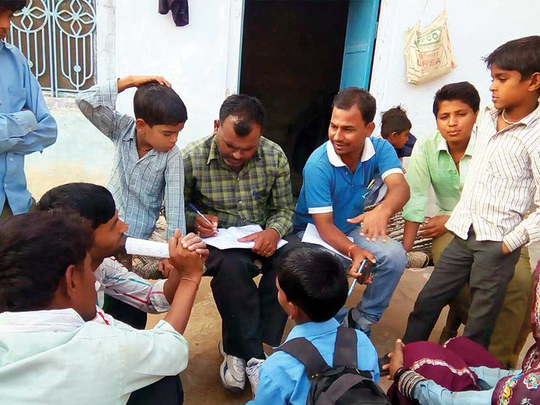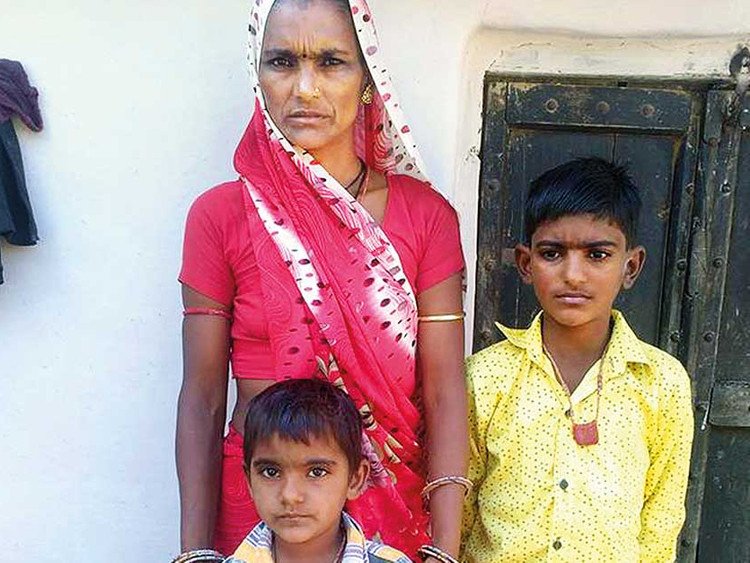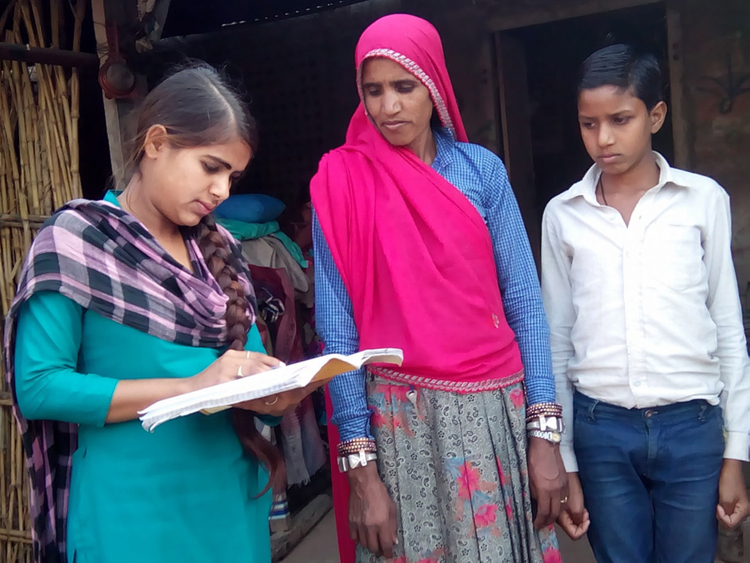
Fourteen-year-old Sonali Kumari lives in a mud house in a village in southern Rajasthan’s Dungarpur district with her widowed aunt and two young cousins. Two years ago, her father died after a long illness. Her mother went off to live with another man, participating in a centuries-old custom called Nata Pratha. Sonali was left with her grandparents.
The custom, prevalent in tribal Rajasthan, allows a man to pay money to live with a woman to whom he is not married. Members of the community, or middlemen, negotiate a price that ranges from Rs25,000 to some hundred thousand rupees. The ancient practice was initially for men and women who were married or widowed, but is evolving to include single people as well.
In tribal society, remarriage is not allowed. Nata Pratha is an alternative to remarriage, especially for widows like Sonali’s mother. The woman typically goes to live with the man, often leaving any children she already has behind.
According to the 2011 census, tribal communities make up 8.6 per cent of India’s population at 104 million people. Rajasthan has a population of approximately 900,000 tribal people, and 40 per cent of them are children. About two per cent of them are affected by Nata Pratha. Southern Rajasthan and other parts of West India are home to the Bhils, who form the largest tribe in South Asia and make up 39 per cent of Rajasthan’s population. Nata Pratha is popular among the Bhils, Gujjars, Meenas and Jats in Rajasthan.
Two practices of Nata are prevalent in these communities: one is where a widow goes to another man without the formalities of a marriage. The second is when a woman divorces her spouse to live with another man of her choice after the new partner pays the first husband a price. The spouse left behind cannot object if he or she is paid this price; this sum of money is called Mohtana.
Without her parents, Sonali’s attendance at school became irregular and she dropped out of studies to complete household chores. Members of Vaagdhara, an NGO based in Banswara in south Rajasthan, heard about Sonali through a program that mapped potential beneficiaries of the government’s social protection schemes. They counselled her grandparents about the importance of education and told them about Palanhar, the government’s foster care scheme for children without parents. Under Palanhar, a guardian gets money to raise such children provided the children attend school regularly.
Sonali enrolled for the scheme and with help from the NGO she was admitted to Class Seven at a village government school. She is in Class Nine now. Despite this, she’s not happy – her grandparents didn’t spend the government grant on her, which forced her to leave them and stay with her aunt.
Sonali is one of many children who bear the brunt of Nata Pratha. “When women start a new relationship as a part of Nata Pratha, they often leave their [children] behind,” says Sanjay Nirala, a child protection officer at Unicef in Rajasthan. “The custom is detrimental to the development of children, but it is rampant and socially acceptable.”
Twelve-year-old Jyoti stares listlessly when her emaciated grandmother, Bhanwari Devi Bareth, 60, talks about her ordeal. Bhanwari raised seven children with a paltry government pension of Rs500 (Dh27) and some money she earns by beating a drum in Rajkot village, 160km south of the state capital, Jaipur.
Jyoti’s mother — like Sonali’s — abandoned her when her husband died due to tuberculosis three years ago. Jyoti and her two siblings, aged eight and ten, became Bhanwari’s responsibility. The elderly woman was already raising four children left by another daughter, whose husband hacked her to death in a domestic dispute in 2012 and was then convicted of murder.
Seema was not yet born when her mother left her father. She was born in her stepfather’s house but when she reached Class Five, her uncle brought her back to her biological father. Her stepmother refused to accept her, however, and so her uncle decided to keep her with his family. When volunteers of Vaagdhara met Seema in 2015, she cried while telling them how other children tease her for being the daughter of a Nata woman.
Sonali, Jyoti and Seema are mere examples amongst a vast number of marginalised children who are abandoned by mothers who leave their husbands to live with another man.
Experts on children’s rights have called for the mitigation of multiple vulnerabilities that tribal children face as a consequence of the Nata Pratha custom. At a state-level consultation ensuring the protection of the rights of tribal children in Jaipur recently, the issue of abandoned children was the focus.
Speaking at the consultation, Sunil Thomas Jacob of the United Nations Population Fund said children affected by Nata Pratha were suffering on health, education and social fronts. “In addition to the studies and research by voluntary organisations, the government should also make a sincere attempt to bring tribal children to the mainstream of society,” he said.
Organisations working for the protection of children’s rights are trying to link these children to the Palanhar scheme to provide financial support for their guardians. The guardian receives Rs1,000 (Dh55) every month until the child is 18 years old, and Rs2,000 every year for uniform, clothes and shoes. For children below five, the aid is Rs500 per month.
The scheme launched in 2007 for orphans who had lost both their parents, or whose parents were in jail for crimes. In 2010, one child abandoned by a woman practicing Nata Pratha was included in the list of beneficiaries for the scheme. In March 2013, government allowed up to three such children in the scheme.
Social justice and empowerment director Ravi Jain agrees that the inclusion of children abandoned to Nata Pratha practices in the scheme was late, and that the number of children benefitting from the scheme is still very low. “We are spending Rs2 billion on the scheme every year but we realise several children are still unreached,” he says.
Jayesh Joshi of Vaagdhara, who has worked extensively among the tribal people of southern Rajasthan, says Nata Pratha primarily exists because there is no legal bulwark against a marriage falling apart. It lets ancient customs, which are treated as laws in these parts, come to the rescue of unhappy couples.
Rakesh Kumar is a writer based in Jaipur, India.
PULLQUOTE:
“The custom is detrimental to the development of children, but it is rampant and socially acceptable.”
Sanjay Nirala, Unicef














